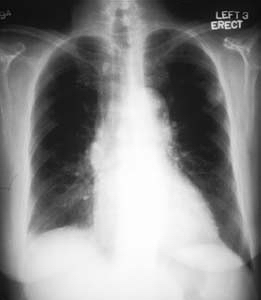Palmar plantar erythrodysesthesia classification
|
Palmar plantar erythrodysesthesia Microchapters |
|
Differentiating Palmar plantar erythrodysesthesia from other Diseases |
|---|
|
Diagnosis |
|
Treatment |
|
Palmar plantar erythrodysesthesia classification On the Web |
|
American Roentgen Ray Society Images of Palmar plantar erythrodysesthesia classification |
|
Palmar plantar erythrodysesthesia classification in the news |
|
Directions to Hospitals Treating Palmar plantar erythrodysesthesia |
|
Risk calculators and risk factors for Palmar plantar erythrodysesthesia classification |
Editor-In-Chief: C. Michael Gibson, M.S., M.D. [1]; Associate Editor(s)-in-Chief: Mandana Chitsazan, M.D.
Overview
A number of different classifications have been used for grading the severity of Palmar plantar erythrodysesthesia. The classifications suggested by the National Cancer Institute (NCI), and the World Health Organization are the two most commonly used.
Classification
- Palmar plantar erythrodysesthesia may be classified into 3 grades according to the National Cancer Institute (NCI).[1]
| GRADES | |
|---|---|
| 1 | Minimal skin changes (e.g, erythema, edema, or hyperkeratosis) without pain |
| 2 | Skin changes (e.g, peeling, blisters, bleeding, fissures, edema, or hyperkeratosis) with pain; limiting instrumental ADL |
| 3 | Severe skin changes (e.g, peeling, blisters, bleeding, fissures, edema, or hyperkeratosis) with pain; limiting self care ADL |
- Palmar plantar erythrodysesthesis may be classified into 4 grades based on the World Health Organization. [2]
| GRADES | |
|---|---|
| 1 | Dysesthesia/paresthesia, tingling in the hands and feet |
| 2 | Discomfort in holding objects and upon walking, painless swelling or erythema |
| 3 | Painful erythema and swelling of palms and soles, periungual erythema and swelling |
| 4 | Desquamation, ulceration, blistering, severe pain |
Gallery
-
Palmar–plantar erythrodysesthesia syndrome: Grades 1–3, according to the National Cancer Institute Common Terminology Criteria for Adverse events, version 4. Images shown above are courtesy of Siegfried Segaert and Eric Van Cutsem
References
- ↑ "Protocol Development | CTEP".
- ↑ Nagore E, Insa A, Sanmartín O (2000). "Antineoplastic therapy-induced palmar plantar erythrodysesthesia ('hand-foot') syndrome. Incidence, recognition and management". Am J Clin Dermatol. 1 (4): 225–34. doi:10.2165/00128071-200001040-00004. PMID 11702367.
